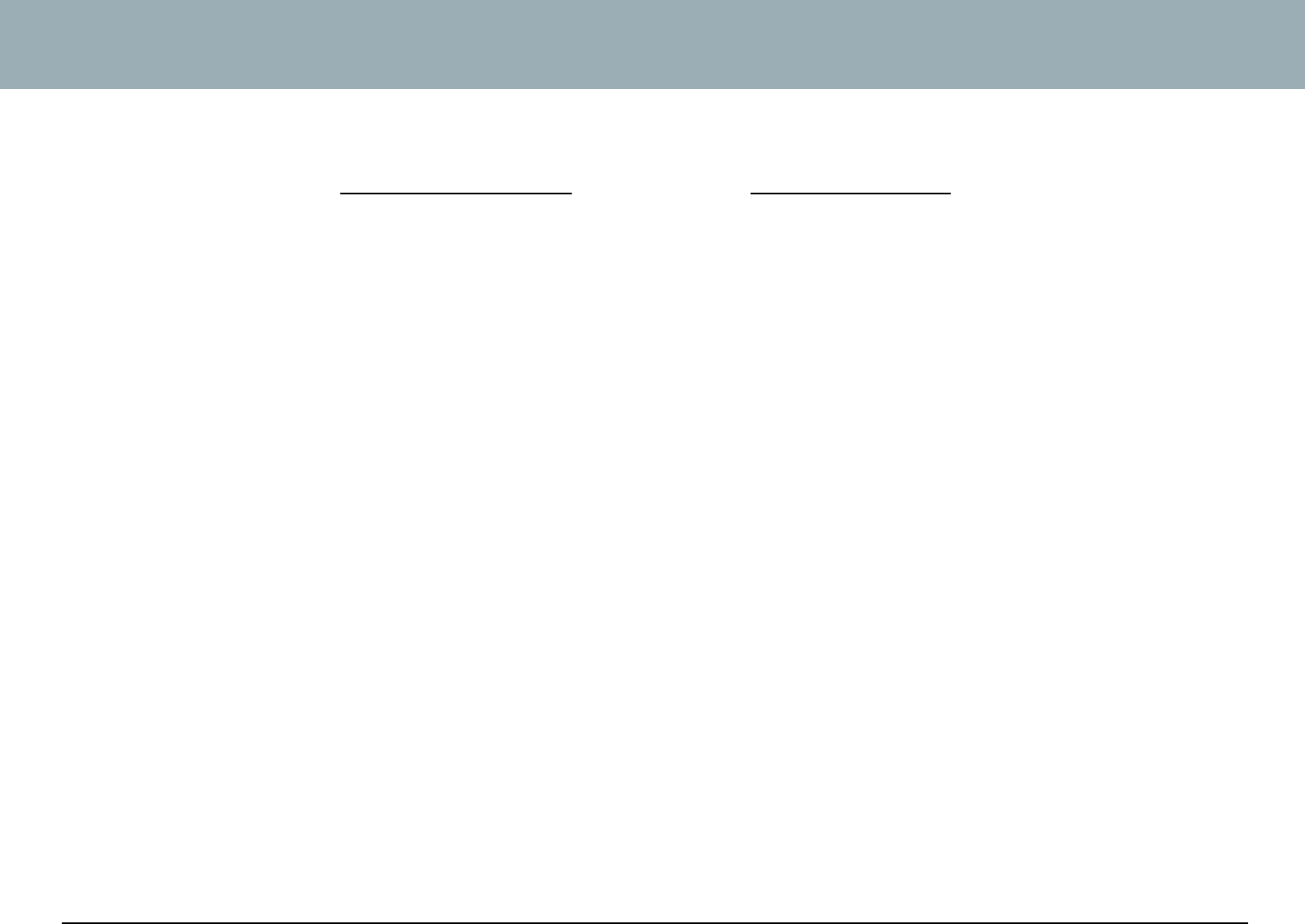
Loans
Information for:
All Funds
Page 1 December 2022 Fact Sheet #81
OVERVIEW
Pension loans are a benet oered to active mem-
bers of the Public Employees Retirement Sys-
tem (PERS), Teacher’s Pension and Annuity Fund
(TPAF), Police and Firemen’s Retirement System
(PFRS), State Police Retirement System (SPRS), or
Judicial Retirement System (JRS).
The New Jersey Division of Pensions & Benets
(NJDPB) allows you to borrow from your retirement
system a minimum of $50, and loan amounts then
increase in multiples of $10. You may borrow up to
50 percent of all pension contributions posted to your
account at the time of the loan request, provided that
your total outstanding loan balance will not exceed
$50,000. See the “Maximum Loan Balance” section
for details.
The NJDPB updates your account with pension con-
tributions and loan repayments (including lump-sum
loan payments) on a quarterly basis, by the end of
the month in February, May, August and November.
These updates are for transactions in the prior quar-
ter. When you make a payment, those funds will not
immediately post to your account, and your future
borrowing eligibility may be delayed due to the re-
strictions on maximum loan balances set forth in the
IRS requirements.
All loans are disbursed using Electronic Fund Trans-
fer (EFT). Once a loan is requested it cannot be can-
celed. Loan disbursements may not be returned. If
you are unsatised with your loan balance or repay-
ment schedule, you may request a full loan payo.
See the “Paying O Your Loan Early” section.
REQUIREMENTS FOR TAKING A LOAN
In order to be eligible to borrow from your pension
account you must meet the following requirements:
• You must be an active, contributing member of
an eligible New Jersey State-administered re-
tirement system. Retirees and members who
are not in a regular pay status (i.e., suspended
without pay or on an unpaid leave of absence)
are not eligible for a pension loan.
• You must have three years of contributing mem-
bership posted to your account. Pension contri-
butions and service credit are updated and post-
ed to your account on a quarterly basis. For most
members, eligibility to borrow occurs three years
and two months after enrollment.
• You are permitted no more than two loans in a
calendar year; additional loan requests will be
denied.
• You must have a valid bank routing number and
account number when submitting a Loan Appli-
cation; the NJDPB does not send paper checks.
• You must submit your application online via your
Member Benets Online System (MBOS) ac-
count.
Note: Access to MBOS is not currently available
to members of the JRS. To apply for a pension
loan, JRS members should complete the JRS
Loan Application and mail it to the NJDPB. Mem-
bers applying for a loan within six months of re-
turning from a leave of absence or transferring to
a new employer within the same or dierent re-
tirement systems, or State employees paid on a
supplemental payroll schedule may not be able
to access the MBOS Loan Application. In these
cases, your employer must complete a Certied
Loan Request, to verify your salary and/or certi-
fy that you are actively employed. Above-refer-
enced appliations can be found on the NJDPB
website at: www.nj.gov/treasury/pensions
• If you have established a security freeze on your
account due to identity theft, you will not be able
to process a loan online. Contact the Oce of
Client Services at (609) 292-7524, and the NJD-
PB ID Theft Coordinator will handle the process-
ing of your loan request.
INTEREST RATE AND
ADMINISTRATIVE PROCESSING
Interest is charged on the declining balance of the
loan at a commercially reasonable rate set annually
by the New Jersey State Treasurer. When you bor-
row, you will have the same interest rate for the life
of your loan unless you borrow again in a dierent
calendar year after the interest rate has changed.
Every time you borrow, the entire outstanding bal-

Fact Sheet #81 December 2022 Page 2
Loans
This fact sheet is a summary and not intended to provide all information.
Although every attempt at accuracy is made, it cannot be guaranteed.
ance is recertied at the current year’s interest rate.
You can view your loan certications on MBOS to
see your repayment rate and the scheduled number
of payments. The new loan must be repaid within ve
years of the original loan date. The interest rate is
determined using the Prime Rate as of December of
the previous year plus 2.5 percent. An administrative
processing fee applies to all pension loans, which is
set annually and based on the actual costs associat-
ed with administering the pension loan program. For
the current interest rate set by the State Treasurer
and administrative fee, visit our website.
MAXIMUM LOAN BALANCE
AND BORROWING LIMITS
Internal Revenue Service (IRS) regulations regard-
ing subsequent loans require that any new loan
amount — when added to the highest balance due
for all previous loans during the prior 12-month pe-
riod — cannot exceed $50,000. The $50,000 maxi-
mum is comprised of the following:
• The amount of the loan you are currently re-
questing; plus
• Your highest outstanding loan balance from the
PERS, TPAF, PFRS, SPRS, and/or JRS in the
prior 12 months; plus
• The highest outstanding loan balance from any
other governmental plans sponsored or adminis-
tered by your public sector employer.
When you submit your loan request, you will be re-
quired to indicate whether you have taken a loan in
the prior 12-month period (other than from the PERS,
TPAF, PFRS, SPRS, or JRS) from plans oered by
your public employer. It is important to maintain doc-
umentation for your records of the pension loans tak-
en from other plans oered by your employer in the
event of an audit. Any amounts received in excess of
the maximum may be declared a deemed distribution
and subject to additional tax by the Internal Revenue
Service (IRS). See the “Internal Revenue Service
(IRS) Requirements” section for more information.
See “Appendix” for detailed examples of borrowing
scenarios.
FIVE-YEAR END DATE AND
MINIMUM REPAYMENT AMOUNT
Your total outstanding loan balance must be repaid
within ve years. If you take another loan while you
still have an outstanding loan balance posted to your
account, the combined loan balance must be repaid
within the original ve-year period from the rst loan.
The minimum deduction for your loan is set by law
as no less than your pension contribution. You can
choose a payment amount larger than the minimum
deduction; however, the deduction cannot exceed
25 percent of your base salary. Some members with
an outstanding loan balance may be required to pay
more than the minimum deduction. If you take a
second loan when you already have an outstanding
loan, the two loans are combined and the ve-year
maximum repayment period that applied to your pre-
vious loan also applies to your new loan. All loans
are also subject to the maximum loan balance re-
quirements previously described. See “Appendix” for
detailed examples of borrowing scenarios.
LOAN SCHEDULE
Loans are calculated to allow the longest amount of
time to pay them o at the lowest monthly repayment
rate, unless otherwise requested. The number of
loan payments and the amount of interest is depen-
dent upon a continuous repayment schedule. If you
are not receiving your paycheck for any reason and
your loan deductions are not remitted as scheduled,
your loan balance will accrue additional interest if
you are o payroll for any amount of time. It is import-
ant that you notify the NJDPB immediately upon your
return to payroll, so your loan plus additional accrued
interest can be rescheduled and repaid by your ve-
year end date. Failure to notify the NJDPB in a timely
manner will cause additional interest to accrue and
may result in tax penalties from the IRS. See the “In-
ternal Revenue Service (IRS) Requirements” section
for more information. The NJDPB reserves the right
to audit your loan balance at any time, including after
retirement.
PAYING OFF YOUR LOAN EARLY
You may make a lump-sum payment to pay o your
full loan amount; however, partial repayment of your
loan balance is not permitted. You may request a
lump-sum payo letter using the “Letters and State-
ments” application through MBOS or by calling the
Oce of Client Services at (609) 292-7524. The pay-
o letter will be mailed to you with the amount due
and the date that your payment must be received by
the NJDPB.
Note: Due to time frames associated with certifying
loan deductions and payments, a lump-sum payo
may not be an option if your loan has less than six bi-
weekly or three monthly payments remaining on your
entire balance. The NJDPB updates your account
with pension contributions and loan repayments
(including lump-sum loan payments) on a quarterly
basis. Please note that any repaid funds will not im-
mediately post to your account, and any future loan
request is subject to the restrictions on maximum
loan balances set forth in the IRS requirements.
LOAN BALANCE AT RETIREMENT
If you retire with an outstanding loan balance you
have two options: pay o the outstanding loan bal-
ance in its entirety, or repay the loan deductions from
your retirement allowance until the balance of the
loan plus interest is repaid. The monthly loan pay-
ment will be calculated to have the loan plus interest

Page 3 December 2022 Fact Sheet #81
Loans
This fact sheet is a summary and not intended to provide all information.
Although every attempt at accuracy is made, it cannot be guaranteed.
satised by your ve-year end date. These options
and amounts will be provided to you on your Quota-
tion of Retirement Benets after your retirement has
been calculated.
LOAN BALANCE UPON DEATH OF MEMBER
If you die before the outstanding loan balance plus
interest has been recovered, the remaining balance
will be repaid from the proceeds of any other benet
payable to your beneciary(ies), including group life
insurance or monthly retirement benet payments.
INTERNAL REVENUE SERVICE (IRS)
REQUIREMENTS
Any outstanding loan balance in excess of the maxi-
mum permitted by the IRS shall be declared a deemed
distribution and subject to additional tax. Please note
that having your loan treated as a distribution does
not relieve you of repaying the loan unless you termi-
nate your account by withdrawing your contributions.
If you withdraw from the retirement system, your set-
tlement will be the net amount of your contributions
minus the outstanding loan. If you return to work and
your account is reactivated or you retire, you must
repay the full amount of the outstanding loan with ad-
ditional interest computed from the date you stopped
making loan payments. Under federal regulations,
you must make regular periodic payments to repay
your outstanding loan. If you take out a loan and fail
to make required loan repayments for three consec-
utive months due to termination of employment or
taking a leave of absence without pay, the NJDPB
will send you a letter providing options to pay the out-
standing balance, either by a lump-sum payment or
by making monthly payments through the NJDPB’s
loan billing system. Your response is required within
30 days of receipt of the letter. If the payment is not
made, the NJDPB will treat your loan as a deemed
distribution. Unlike a normal pension distribution, a
loan treated as a distribution cannot be rolled over to
an IRA or other qualied retirement plan. If all or any
part of your loan is declared a deemed distribution,
you will have to claim the loan amount as additional
income when you le your federal income tax return
for the year in which the loan distribution occurred. If
you are under age 59 1/2, you will also be assessed
10 percent federal tax by the IRS at the time you le
your federal tax return for taking an early pension
distribution. The loan distribution will not be subject
to New Jersey State tax. If your loan is treated as a
distribution, you will receive IRS Form 1099-R from
the NJDPB in January following the year in which
the distribution occurred. The form will indicate how
much you must include in your income for tax-report-
ing purposes. Generally, the full amount of the out-
standing loan will be taxable; however, if you made
after-tax contributions to your pension account, a
portion of the outstanding loan will be non-taxable.
This fact sheet has been produced and distributed by:
New Jersey Division of Pensions & Benets
P.O. Box 295, Trenton, NJ 08625-0295
(609) 292-7524
For the hearing impaired: TRS 711 (609) 292-6683
www.nj.gov/treasury/pensions

Fact Sheet #81 December 2022 Page 4
Loans
This fact sheet is a summary and not intended to provide all information.
Although every attempt at accuracy is made, it cannot be guaranteed.
Examples for Five-Year End Date and
Minimum Repayment Amount
Example 1: A member who has no outstanding
loan borrows $10,000 on February 1, 2020, and re-
quests the minimum loan repayment. This is deter-
mined to be $270 per month for 41 months based
on his monthly pension contribution. Therefore, this
loan would be repaid by July 1, 2023. On Febru-
ary 1, 2023, he takes another loan of $10,000 and
requests the minimum loan repayment. As he still
has a balance left on the rst loan, the remaining
balance on the that loan plus the new loan must be
paid by February 1, 2025 - ve years from the date
he took his rst loan. Based on his new repayment
term, his minimum loan repayment is determined to
be $500 per month to have the entire loan balance
paid o by February 1, 2025.
Example 2: A member who has no outstanding
loan is eligible for and borrows $40,000 on March 1,
2020, with a monthly repayment of $667. On Feb-
ruary 1, 2021, she wishes to borrow an additional
$15,000. By this time, she has repaid $6,000 which
has been posted to her account. However, since
her highest loan balance in the prior 12 months
was $40,000, her new loan request is limited to
$10,000 as the amount she may borrow cannot
exceed $50,000, or 50 percent of the posted pen-
sion contributions when combined with the highest
balance due for an existing loan during the prior
12-month period. Her minimum loan repayment on
the previous balance plus the new balance is deter-
mined to be $775 per month, which must be paid
by the original ve-year end date (March 1, 2025).
Examples for Maximum Loan Balance and
Borrowing Limits Section
Example 1: A PFRS member has no loans from
the PFRS or any other plan oered by his public
employer. He borrows $50,000 from his total PFRS
contributions of $100,000 on April 1 of the current
year, and all required loan payments are deducted
from his paycheck on a regular basis. On January 1
of the following year, he requests a small loan that
would bring his total outstanding loan balance back
to $50,000. The loan request is rejected because
the highest outstanding loan balance in the prior
12-month period was at the $50,000 maximum lim-
it. He will be unable to borrow from his account until
the highest outstanding loan balance in the prior
12-month period falls below the $50,000 limit.
Example 2: A TPAF member borrows $15,000 on
March 1 of the current year from a 403(b) retire-
ment savings plan oered by her school district. At
the time the loan is taken, she had no prior loan. On
February 1 of the following year, she attempts to
borrow $40,000 from her TPAF contributions. She
has no prior loan from the TPAF and the amount
requested does not exceed 50 percent of the post-
ed pension contributions. At the time the TPAF loan
is requested, the outstanding loan balance from
the retirement savings plan oered by her school
district is $10,000, as veried by the plan admin-
istrator in writing. However, since the highest loan
balance in the prior 12-month period for that loan
was $15,000, the maximum amount she may bor-
row from her TPAF account is $35,000. This is be-
cause the amount she may borrow cannot exceed
$50,000 when combined with the highest balance
due during the prior 12-month period for any loans
that she has due to public employment.
APPENDIX
